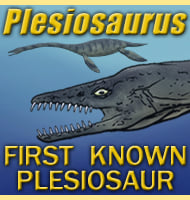In Depth
Originally described as a species of Kronosaurus, K. boyacensis, was re-described as a distinct genus Monquirasaurus, in 2021. Monquirasaurus was a large pliosaur that swam around in the waters around Central America during the early Cretaceous. Monquirasaurus would have easily been among the larger oceanic predators of this time and easily capable of taking down other marine reptiles from turtles to plesiosaurs and perhaps even other pliosaurs.
Like many other large pliosaurs it is hard to be absolute about the exact size of Monquirasaurus. The skull is reconstructed at two hundred and forty-five centimetres long, and one hundred and twenty centimetres wide at widest span (for holotype individual). Lower jaw has a length of two hundred and sixty-five centimetres. The body proportion however is where things get a little murky for details while the post cranial skeleton is largely complete, it is missing the tail, and other bones may have been distorted and/or moved slightly. The total preserved length (not including missing portions) of the body and skull is a little over seven meters.
The real problem in estimating size is the lack of the tail in the holotype individual. If Monquirasaurus was similar to brauchauchenine pliosaur proportions then a skeletal length of eight meters would be a solid estimate for the skeleton. However this depends entirely upon proportional similarity which cannot be known with certainty at the time of discovery. If Monquirasaurus was more like early pliosaur forms the tail may have been a little longer. What compounds the problem further however is the presence of external soft tissues around the tail which may have increased length. Also, the holotype individual of Monquirasaurus is termed a young adult. Therefore this individual would have at least been almost fully grown, but perhaps not completely so. All these variables working together and it is perhaps possible to speculate that Monquirasaurus might have surpassed eight meters, perhaps reaching nine or even ten meters total body length. But that is speculation. Pliosaur morphology underwent major revisions in the first couple of decades of the twenty-first century and the science is still far from exact.
Further reading
- Ein gro�w�chsiger Pliosauride (Reptilia: Plesiosauria) aus der Unterkreide (oberes Aptium) von Kolumbien. - Courier Forschungsinstitut Senckenberg 145:1-25. - O. Hampe - 1992.
- Giant pliosaurids (Sauropterygia; Plesiosauria) from the Lower Cretaceous peri-Gondwanan seas of Colombia and Australia. - Cretaceous Research. 132 - Leslie F.No� & MarcelaG�mez-P�rez - 2021.









